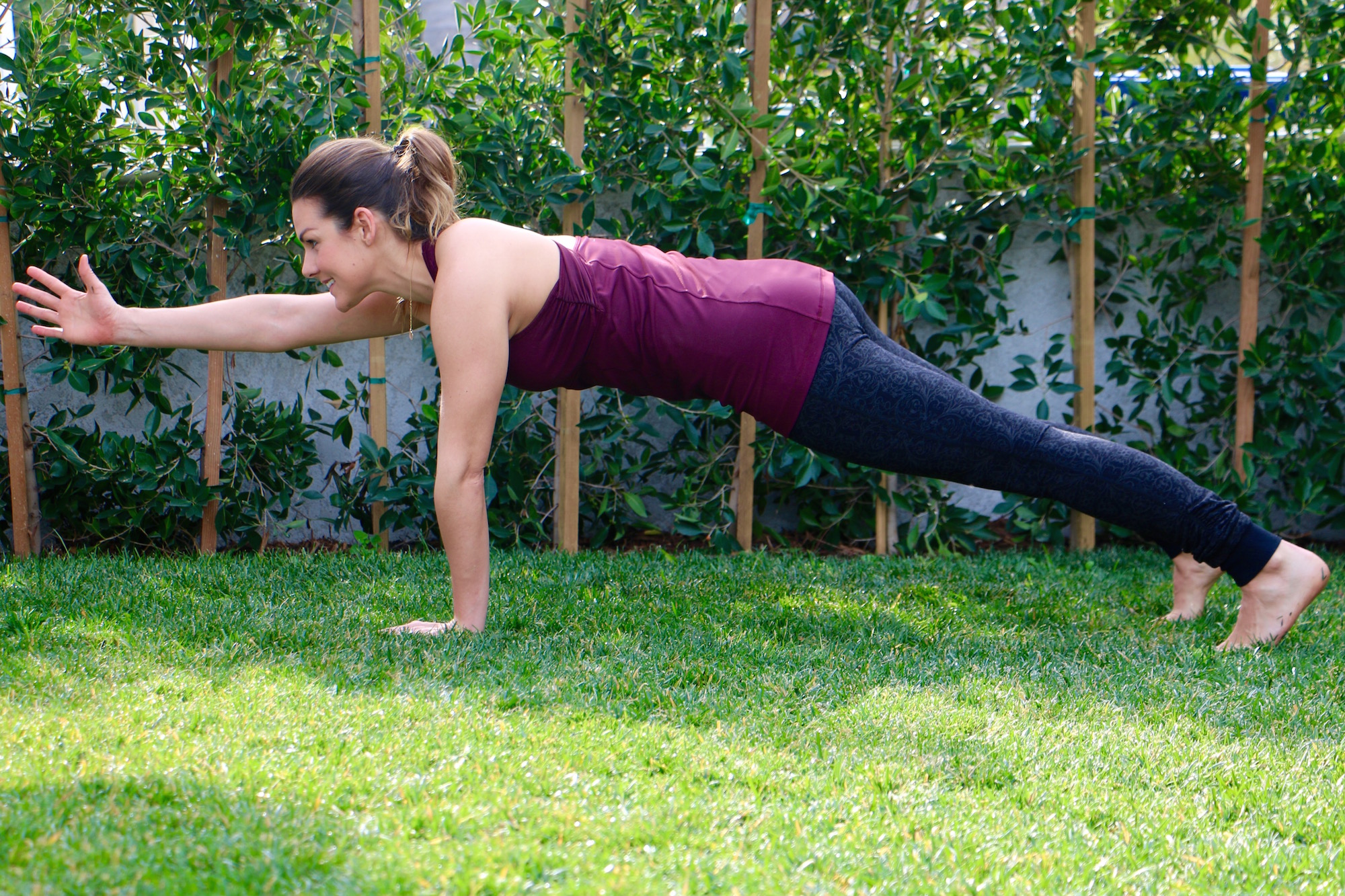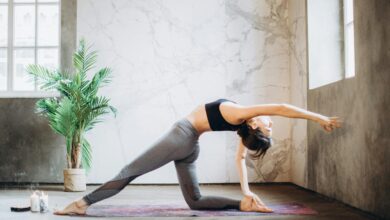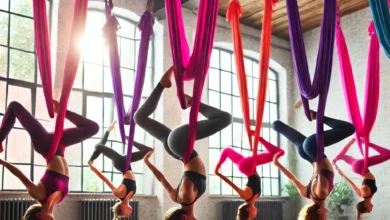
How to Do a Plank Correctly: Tips for Proper Form and Effective Variations

Planks, also known as the “hover exercise” or “front plank,” are a popular fitness exercise that targets the abdominals and core muscles. For beginners, it’s one of the most effective ways to strengthen your core. In fact, incorporating planks into your workout routine is essential for maintaining core stability and strength. Keep reading to explore plank benefits, variations, and how to perform them correctly.
What Are Planks?
A plank is a simple yet effective exercise that involves balancing on your toes and forearms while keeping the rest of your body off the ground. Not only does it work your core, but it also requires you to maintain proper alignment from head to toe. Essentially, this isometric exercise keeps your muscles engaged in a static position, which in turn builds strength.
Planks also play a crucial role in various training programs, from yoga and Pilates to high-intensity interval training (HIIT). A high plank vs. low plank targets different muscles, offering flexibility in intensity levels based on your fitness goals.
Related: Restorative Yoga 101: A Beginner’s Guide to Ultimate Relaxation and Self-Care
How to Do a Proper Plank
Now that you understand what a plank is, let’s move on to how you can perform one correctly.
- Start in the Plank Position: First, find a comfortable position where you can extend your full body length. Using a yoga or exercise mat will provide cushioning for your hands and toes.
- Align Your Body: Place your forearms on the ground, ensuring your elbows are directly under your shoulders. Meanwhile, keep your toes on the floor and align your body in a straight line from your head to your heels.
- Engage Your Core: As you hold this position, engage your abdominal muscles by pulling your navel toward your spine. Be sure to keep your body in a straight line without sagging your hips or arching your back.
- Hold the Position: Initially, hold the plank for 10 seconds. However, as you get stronger, aim to hold it for 30, 45, or even 60 seconds.
Incorporating planks fitness exercise into your daily workout helps build muscle endurance, tone your abs, and improve your overall physical fitness.
Key Benefits of Adding Planks to Your Routine
The planks fitness exercise offers numerous physical benefits that go beyond just core strength. Here’s why planks are an essential part of any workout routine:
- Strengthens the Core: A strong core is the foundation of most physical activities. Planks activate the rectus abdominis (the “six-pack” muscle), transverse abdominis, obliques, and erector spinae. Strengthening these muscles can improve your performance in sports, weightlifting, and other physical activities.
- Improves Posture: Good posture is key to avoiding back and neck pain. Since planks work the muscles that support the spine, including the shoulders and glutes, they help promote proper posture both during exercise and in daily activities.
- Boosts Stability and Balance: Planks challenge your balance by engaging multiple muscle groups simultaneously, improving your stability and coordination. This is particularly important for athletes, or anyone involved in activities requiring agility and balance.
- Reduces Risk of Injury: A weak core can contribute to poor posture and lead to injuries, particularly in the lower back. By strengthening your core with planks, you reduce the risk of injury during other exercises or daily tasks.
- Increases Calorie Burn: Although primarily a strength exercise, planks engage large muscle groups, which boosts calorie burn. Incorporating planks into your workout routine can help you burn fat and tone your body.
- Improves Flexibility: Holding a plank position helps stretch the posterior muscles in your body, including the hamstrings, arches of the feet, and shoulders. This can improve your flexibility over time, making other exercises easier.
Related: 15 Gentle Yoga Poses for Beginners: Cultivate Strength, Flexibility, and Calm
Planks Fitness Exercise Benefits
The planks fitness exercise offers a range of benefits, making it a staple in any workout routine:
- Core Strength: This exercise primarily targets the core muscles, including the rectus abdominis, transverse abdominis, and obliques. Strengthening these muscles can enhance athletic performance, support weightlifting, and improve posture.
- Posture and Alignment: Good posture is essential for preventing back and neck pain. Planks engage the muscles that help stabilize your spine, encouraging proper body alignment during everyday activities.
- Balance and Stability: By activating the core, planks improve balance and stability, essential for sports like running, cycling, and even yoga. Incorporating a planks fitness exercise into your training can increase your control during athletic movements.
- Injury Prevention: A strong core helps protect your lower back and reduces the risk of injury during other exercises. Regularly performing planks strengthens the muscles that support your spine, minimizing stress on the joints.
- Calorie Burn: While planks are primarily a strength-building exercise, they also engage large muscle groups, which helps burn calories. This can contribute to fat loss and a more toned physique when combined with a balanced diet.
- Flexibility Improvement: Holding a plank position stretches various muscles, including the hamstrings and shoulders. Over time, this can lead to improved flexibility and a reduced risk of muscle stiffness.
Related: Introduction to Vinyasa Yoga Journey
Advanced Plank Variations to Challenge Your Core
Once you’re comfortable with the standard plank, try these more advanced variations to increase the plank intensity level and challenge your core:
- Plank With Leg Lift: Start in a forearm plank and lift one leg 5 to 8 inches off the floor. Hold for a few seconds before switching legs. This variation adds difficulty by engaging the glutes and lower back muscles.

- Plank With Arm Lift: Shift your weight onto one forearm and extend the opposite arm straight out in front of you. Hold for a few seconds, then switch sides. This variation requires greater core stabilization and helps build upper body strength.

- Side Plank: Turn onto one side, balancing on one forearm and the edge of your foot. This variation targets the obliques, helping to tone and strengthen the muscles along the sides of your torso.

Each of these advanced exercises increases the plank intensity level, ensuring that you continue to challenge your body and improve your core strength.
Planks Fitness Exercise Routine: Repetitions and Timing
For maximum results, incorporate sets of shorter planks into your routine. Instead of holding a single plank for 60 seconds, try breaking it up into 10- to 15-second intervals with 30-second rests in between. Repeat this sequence for 3 to 5 sets. This method helps maintain proper form while maximizing your total plank time.
Common Mistakes to Avoid

To get the most out of your planks fitness exercise, avoid these common mistakes:
- Arching Your Back: A common error is allowing your back to arch, which puts unnecessary strain on your spine. Focus on keeping your core tight and your body aligned.
- Sagging Hips: As your muscles fatigue, your hips may begin to drop. If this happens, it’s time to rest. Keep your hips lifted and aligned with the rest of your body to avoid strain.
- Lifting Your Head: Keep your neck in a neutral position by looking down at the floor. Lifting your head can cause neck strain and misalignment.
Safety Tips for Performing Planks
Although planks are a safe and effective exercise, it’s important to take precautions:
- Shoulder Issues: If you have shoulder injuries, modify the plank to reduce strain or avoid the exercise altogether. Shoulder pain during a plank is a sign that you may need to stop.
- Pregnancy Modifications: Most people can safely perform planks during pregnancy, but it’s a good idea to modify the exercise by doing an incline or side plank. Always consult with your healthcare provider before incorporating planks into your fitness routine while pregnant.
Frequently Asked Questions About Planks Fitness Exercise
What muscles does the planks fitness exercise work?
The planks fitness exercise primarily targets the core muscles, including the rectus abdominis, transverse abdominis, obliques, and erector spinae. It also engages the glutes, shoulders, and quadriceps.
How many calories does a planks fitness exercise burn?
A person weighing 150 pounds burns approximately 3 to 4 calories per minute while holding a plank, though this
What are planks good for?
Planks are excellent for building core strength, improving posture, and enhancing balance and stability. A strong core also supports other physical activities and can help prevent lower back injuries.
Conclusion
Planks are a versatile and effective fitness plank exercise that offer numerous physical benefits, from strengthening your core to improving balance and stability. Whether you’re just starting with the tabletop plank or you’re ready for advanced variations like the leg or arm lift, there’s a plank exercise suitable for every fitness level. By incorporating these into your routine, you’ll be on your way to a stronger, healthier core.



